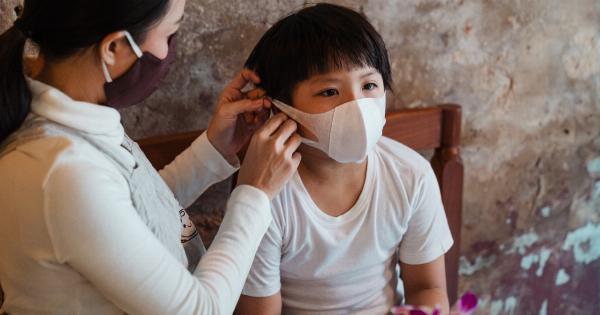Being a parent or a soon-to-be mom is an exciting and fulfilling journey, but along with the joy, there also comes the responsibility of ensuring the well-being of your child.
One common health concern that parents need to be aware of is the Koxaki virus. In this comprehensive guide, we will discuss everything you need to know about the Koxaki virus, including its symptoms, transmission, treatment, and prevention.
What is the Koxaki Virus?
The Koxaki virus, also known as Coxsackievirus, belongs to a group of viruses called enteroviruses. These viruses primarily target the gastrointestinal tract but can also affect other parts of the body, including the skin.
There are different types of Coxsackieviruses, with the most common being Coxsackievirus A16 and Coxsackievirus B.
How is the Koxaki Virus Transmitted?
The Koxaki virus is highly contagious and can spread easily from person to person. It can be transmitted through direct contact with an infected person’s saliva, nasal secretions, feces, or fluid from blisters caused by the virus.
The virus can also spread by touching contaminated surfaces or objects and then touching the mouth, nose, or eyes.
Symptoms of Koxaki Virus
The symptoms of Koxaki virus infection can vary depending on the type of virus and the affected individual’s age. In infants and young children, common symptoms may include:.
- Fever
- Irritability
- Poor appetite
- Sore throat
- Rash on the hands, feet, and mouth
- Blisters or ulcers in the mouth or throat
In older children and adults, the symptoms may include:.
- Fever
- Sore throat
- Headache
- Muscle aches
- Fatigue
- Rash on the hands, feet, and mouth (less common)
Diagnosing Koxaki Virus
Diagnosing the Koxaki virus infection usually involves a physical examination and a discussion of the symptoms with a healthcare professional.
Sometimes, additional tests may be performed to confirm the presence of the virus, such as a throat swab culture or a stool sample analysis.
Treatment for Koxaki Virus
Currently, there is no specific antiviral treatment available for Koxaki virus infections. The focus of treatment is mainly on relieving the symptoms and making the affected individual more comfortable.
Over-the-counter pain relievers, such as acetaminophen or ibuprofen, can help reduce fever and alleviate discomfort. It is important to consult a healthcare professional for appropriate dosages and to ensure they are safe for the age of the individual.
Additionally, staying well-hydrated and getting plenty of rest are essential for a speedy recovery. Individuals with mouth sores can also benefit from consuming soft foods or liquids that are easier to swallow.
It is important to avoid acidic or spicy foods that can further irritate the mouth.
Preventing the Spread of Koxaki Virus
Preventing the spread of the Koxaki virus is crucial to protect others, especially infants and individuals with weakened immune systems. Here are some preventive measures parents and soon-to-be moms can take:.
- Wash hands frequently with soap and water for at least 20 seconds, especially after using the toilet or changing diapers, before eating or preparing food, and after being in public places.
- Avoid close contact with individuals who are infected with the virus.
- Cover the mouth and nose with a tissue or elbow when coughing or sneezing and dispose of tissues properly.
- Regularly clean and disinfect frequently-touched surfaces and objects.
- Encourage children to refrain from sharing utensils, cups, or personal items with others.
- Ensure individuals with symptoms of the Koxaki virus avoid contact with others until they are no longer contagious.
- Follow any guidelines or recommendations provided by healthcare professionals or public health authorities regarding outbreaks or specific preventive measures.
When Should You Seek Medical Attention?
In most cases, the symptoms of Koxaki virus infection resolve on their own within a week or two without any long-term complications. However, it is advisable to seek medical attention if:.
- The symptoms worsen or persist for an extended period.
- The affected individual has difficulty breathing or swallowing.
- The rash becomes severe, painful, or shows signs of infection.
- There is a high fever that does not respond to over-the-counter medications.
Always consult a healthcare professional for proper evaluation and guidance.
Conclusion
Being informed about the Koxaki virus is crucial for parents and soon-to-be moms to protect their children and themselves.
By knowing the symptoms, transmission methods, and preventive measures, parents can take the necessary steps to keep their families healthy. While the Koxaki virus can be challenging, proper care, hygiene practices, and timely medical attention can help manage the infection effectively.

























